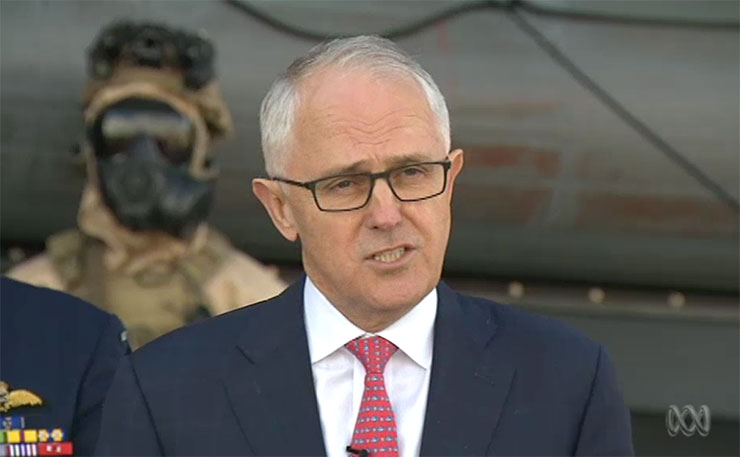The Government’s proposed “Home Affairs” mega ministry will probably make us less safe from terrorism and other violence, writes Ian McAuley.
Be careful when entering the water. In 2015, 25 Australians drowned in swimming pools and nine drowned in bathtubs. In addition two people lost their lives in shark attacks (official data does not reveal where these attacks took place. Presumably they were in the open ocean, not the hazardous environment of swimming pools or bathtubs).
On a related point, in a survey of female students in a Californian university, researchers asked separate groups of women to estimate their risks of being victims of:
(1) assault;
(2) sexual assault;
(3) sexual assault by another student.
Basic logic tells us that the more specific the scenario the less likely it is to happen. There are many forms of assault other than sexual assault, and fellow-students aren’t the only sexual predators. Yet the students ranked (3) as more likely than (2), and (2) as more likely than (1). That ordering defies logic but makes psychological sense.
At play in these examples of sharks and assaults is the “vividness” bias. The more elements there are of a coherent story, the more realistic and imminent that scenario becomes in our brain, particularly if there has been recent publicity of one or more high-profile events. And the more gory the situation the deeper impression it can make: compare the mental images of someone drowning in a bathtub and of someone else being eaten by a shark.
Terrorists know all about the vividness bias. Their high point was the attack on the World Trade Centre towers. But to these deranged religious fanatics it’s not the number of deaths that counts; it’s the inculcation of fear in the community, and spectacle is one of their main weapons.
As Greg Austin of the Australian Centre for Cyber Security points out, we have become fearful. Most of us are concerned that Australia will be a target for terrorism at home and believe that the government should introduce greater preventive measures to combat it, even though over the last 20 years terrorist attacks in Australia have claimed the lives of only three or four victims. Roughly the same number as sharks but less than bathtubs.
That is not to downplay the risk of terrorist attacks, and the low number is a credit to the competence of our police forces and intelligence agencies, state and federal. Our being an island “girt by sea” also plays a part. But we should see these risks in context.
It’s not only the terrorists who take advantage of the vividness bias. So too do politicians, who see political gains in raising fear in the community. People gripped by fear turn to their supposed protectors, and a government that can portray itself as “tough on terror” can benefit from this bias.
Although our crop of far-right politicians in the Liberal, National and One Nation Parties dissociate themselves from terrorists inspired by a perverted model of Islam, the terrorists and our own far-right are united in their ideologies of intolerance, bigotry and authoritarianism, and a desire to instill fear into people: only their methods differ (it’s erroneous to call Islamist terrorists “radicals” – they’re the quintessential conservatives).
I write this in the context of the Prime Minister’s “Home Affairs” mega ministry plan, and appointment of a Director of National Intelligence, all within the portfolio responsibilities of Peter Dutton.
The most obvious risk in this initiative is that a focus on “terrorism” – a term which in most usage appears to mean Islamist terrorism – will divert policing and intelligence resources from dealing with other risks. In the US, for example, according to a recent government report “far right extremists” (mainly “white supremacists”) have posed a greater threat than “radical Islamist extremists” in the years since the 9/11 attacks.
The risks from these two groups are not independent: each side feeds off the other. Unless politicians and others with voice are ruthlessly even-handed in denouncing all forms of extremism (including hate language), extremism on both sides will escalate. But our far-right politicians have been remarkably asymmetric in their condemnation of extremism.
That’s not to mention the resources diverted from other hazards with fatal consequences – drivers zonked on ice or alcohol, perpetrators of domestic violence, and people who hear voices directing them to kill. Even with increased budgetary appropriation, policing and intelligent resources are scarce: attention to one area of danger inevitably means less attention to other areas.
Then there are the consequences of people’s irrational behaviour in response to a fear of terrorism. In the wake of the 9/11 attacks, for example, many Americans chose to drive rather than to fly – partly in response to the vividness of the attacks, and partly because of extra costs and inconvenience of flying resulting from anti-terrorist measures. By driving rather than flying they exposed themselves to greater risks, and it didn’t take long for extra road fatalities to outweigh lives lost in the 9/11 attacks.
These are the easily-identified consequences of a heightened fear of terrorism. More generally a fearful society is a less-open and less-trusting society. It devotes more and more resources to personal and collective security at the expense of other activities. Mistrust of one another depletes our social capital. An irrational fear of congregating in public places can sap life out of a community.
These are the results, rather than a crude “body count”, that terrorists chalk up as “victories”. Even a thwarted attack is a “success” if it raises fear in the community.
Is Turnbull, for the sake of scoring a cheap political point and appeasing the far right in his party, helping the terrorists achieve their aims?
Donate To New Matilda
New Matilda is a small, independent media outlet. We survive through reader contributions, and never losing a lawsuit. If you got something from this article, giving something back helps us to continue speaking truth to power. Every little bit counts.





